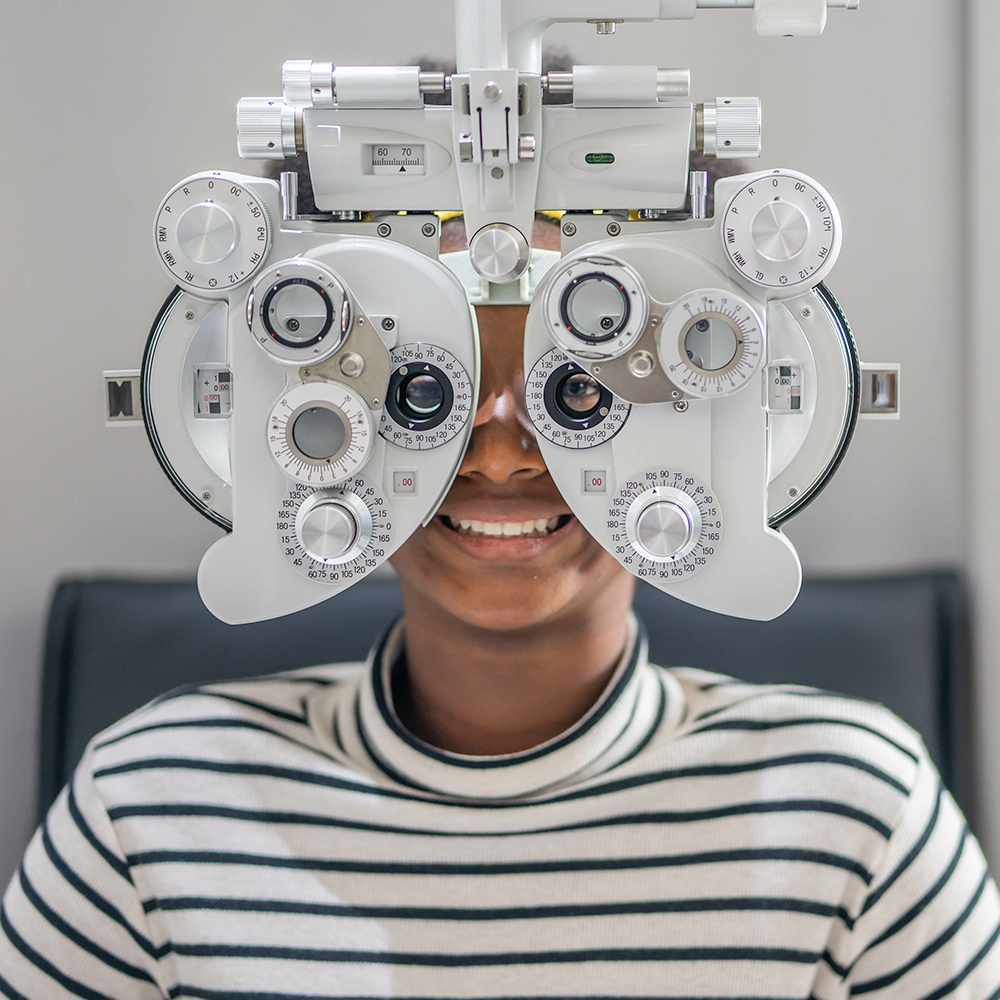Discovering the most up to date Technical Improvements in Optometry and What They Mean for Optometrists
In the ever-evolving area of optometry, current technological advancements are reshaping just how experts approach eye treatment. From the precision of Optical Comprehensibility Tomography to the nuanced insights used by AI-driven diagnostic devices, these innovations are establishing new requirements in patient evaluation and therapy. Teleoptometry is poised to redefine ease of access, making sure that knowledge transcends geographical limitations. As these innovations permeate the technique, optometrists are encountered with the challenge of accepting these devices to enhance client end results. Yet, the concern stays: how will these technological changes redefine the duties and responsibilities within the profession?
Advancements in Diagnostic Equipment
Progressing the area of optometry, technologies in analysis devices have actually revolutionized the method eye care professionals examine and diagnose aesthetic disabilities and eye problems. The past decade has witnessed significant technological advancements, enabling more accurate and thorough examinations. Optical Coherence Tomography (OCT), as an example, offers high-resolution cross-sectional pictures of the retina, permitting for the very early discovery of illness such as glaucoma and age-related macular degeneration. This non-invasive imaging technique has actually come to be crucial in modern optometric method.
An additional secret technology is the introduction of sophisticated corneal topography systems, which map the surface area curvature of the cornea with precision. These tools are specifically useful for suitable contact lenses and diagnosing corneal conditions. Furthermore, digital retinal imaging has transformed standard ophthalmoscopy, supplying comprehensive, scenic sights of the retina that promote extensive aesthetic exams.
The advancement of wavefront aberrometry has actually additionally been critical, enabling the evaluation of refractive mistakes with unmatched precision (Eye Doctor). This technology assists in personalizing restorative lenses and improving surgical outcomes for refractive surgeries. Jointly, these analysis innovations encourage eye doctors to provide exceptional client care, ensuring early intervention and tailored therapy strategies, ultimately improving visual wellness end results
AI in Individual Administration
Building on the structure of cutting-edge analysis tools, the incorporation of expert system (AI) in individual administration represents a transformative leap for optometry. AI systems are progressively utilized to enhance efficiency, accuracy, and personalization in patient treatment. By assessing vast amounts of data, AI can recognize patterns and anticipate potential ocular conditions, allowing optometrists to tailor interventions better. This capability is critical in handling chronic eye illness such as glaucoma and diabetic retinopathy, where very early discovery and constant monitoring are crucial.
Additionally, AI-driven platforms assist in structured patient communications and management processes. Automated organizing, digital assessments, and individualized follow-up plans not just improve client satisfaction however additionally optimize time administration for experts. These systems can triage clients based upon the necessity of their conditions, guaranteeing that those in essential need get timely focus.
In addition, AI enhances decision-making by offering optometrists with evidence-based suggestions and therapy paths. By incorporating information from digital wellness documents, AI devices offer insights that inform medical choices, minimizing the threat of mistakes and boosting person end results. As AI remains to evolve, its role in patient management will likely expand, improving the landscape of optometric care.
Advances in Retinal Imaging
In the realm of optometry, retinal imaging has seen amazing technological advancements that are enhancing diagnostic capabilities and person treatment. Developments such as Optical Coherence Tomography (OCT) and fundus photography have revolutionized just how eye doctors examine the retina and imagine. OCT, specifically, offers high-resolution, cross-sectional images of the retina, permitting the detailed exam of its layers. This capacity is vital for very early detection and management of problems like glaucoma, diabetic person retinopathy, and age-related macular a knockout post deterioration.
Boosted imaging techniques like OCT angiography are more refining diagnostic precision. Optometrist Chino. Such developments promote the identification of minute retinal modifications that can signify Continued illness development.
In addition, developments in expert system are augmenting retinal imaging by enabling automatic evaluation of huge datasets. These systems aid eye doctors in identifying patterns indicative of pathology, thus improving analysis precision and performance. Jointly, these innovations are transforming retinal imaging into a foundation of contemporary eye care, enhancing results and broadening restorative possibilities.
Teleoptometry's Expanding Function
Teleoptometry is significantly coming to be an essential part of eye treatment, driven by innovations in electronic interaction and analysis devices. As optometry accepts digital change, teleoptometry helps with remote examinations, enabling optometrists to prolong their solutions past typical limits. This is particularly helpful in underserved and rural areas where accessibility to specialized eye treatment is commonly restricted. By leveraging high-resolution video conferencing and progressed retinal imaging, eye doctors can carry out extensive eye exams from afar, making certain prompt diagnosis and therapy.
The assimilation of synthetic knowledge (AI) additional enhances teleoptometry, allowing the analysis of aesthetic information and helping in the detection of ocular problems such as glaucoma and diabetic retinopathy. AI-powered formulas can rapidly analyze complex imaging information, providing eye doctors with valuable insights that strengthen medical decision-making.
Moreover, teleoptometry supports connection of care with smooth integration with electronic wellness records (EHRs), permitting eye doctors to preserve extensive client backgrounds. This pop over to these guys makes sure that individuals receive constant and customized care even when speaking with various specialists.
Despite these advantages, difficulties stay, consisting of making certain information security and managing client expectations. Teleoptometry stands for a substantial stride in the direction of even more obtainable, reliable, and patient-centered eye treatment. As modern technology develops, its role is poised to expand further.

Future Trends in Eye Care
A myriad of cutting-edge fads is readied to improve the future of eye care, driven by technological advancements and the developing needs of clients. One considerable pattern is the integration of man-made intelligence (AI) in diagnostics, which guarantees to boost the precision and performance of eye examinations. AI algorithms can assess substantial quantities of information from retinal photos, potentially finding problems like diabetic person retinopathy and glaucoma earlier than standard approaches.
Additionally, individualized medicine is gaining traction in optometry, with genetic screening educating tailored therapy strategies. This approach intends to optimize patient outcomes by tailoring interventions to individual genetic profiles. Wearable technology, such as smart contact lenses, is also on the horizon, supplying real-time monitoring of intraocular stress or sugar degrees, thus giving constant understandings into eye and systemic health and wellness.
The fostering of enhanced fact (AR) and online fact (VR) in training and person education is one more arising pattern. These modern technologies provide immersive experiences that can boost understanding and skills both for eye doctors and patients. As these trends develop, eye doctors must remain abreast of technical developments to give innovative treatment, ensuring enhanced individual end results and fulfillment in the vibrant landscape of eye treatment.
Final Thought

Collectively, these analysis improvements equip optometrists to supply superior person treatment, guaranteeing early intervention and customized treatment strategies, inevitably improving aesthetic health and wellness results.

As these innovations proceed to progress, eye doctors must adapt and integrate them right into method, inevitably maximizing workflow efficiency and boosting the requirement of eye care supplied to people.